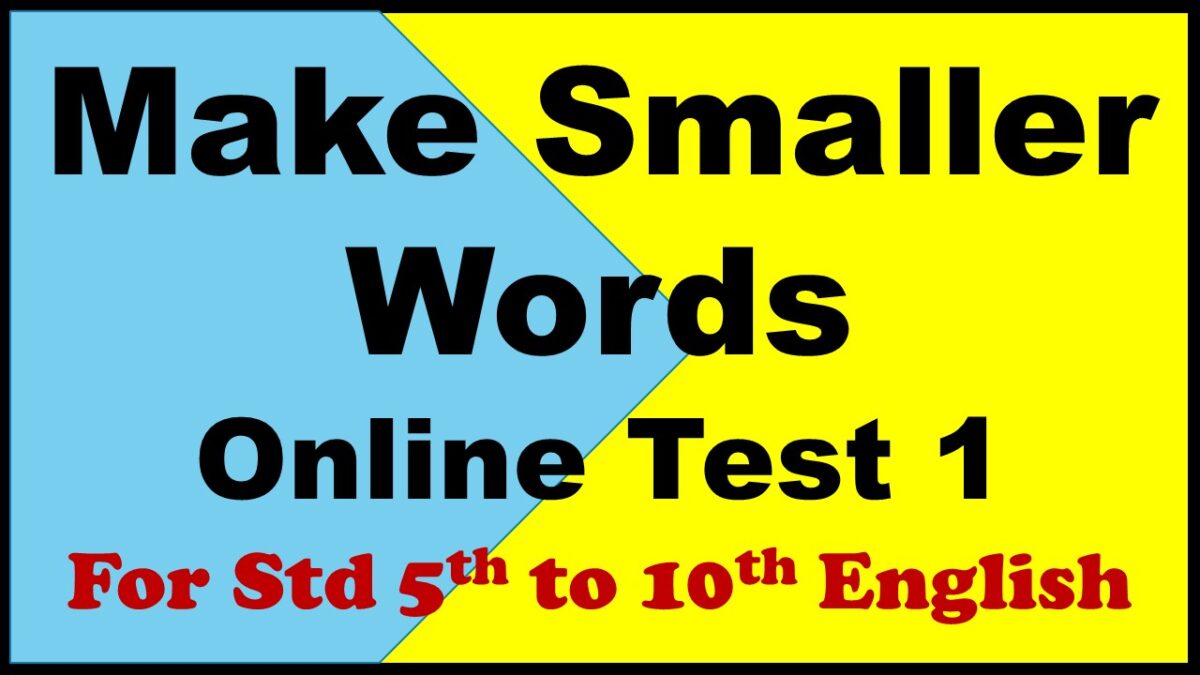घरोघरी तिरंगा – १३ ऑगस्ट ते १५ ऑगस्ट २०२४
स्वातंत्र्याचा अमृतमहोत्सव अंतर्गत केंद्र शासनाकडून हर घर तिरंगा ही मोहिम सुरु करण्यात आली आहे. ही मोहिम लोकांना तिरंगा घरी आणण्यासाठी आणि भारताच्यास्वातंत्र्याची ओळख म्हणून तो फडकवण्यासाठी प्रोत्साहित करते. लोकांच्या ह्रदयात देशभक्तीची भावना जागृत करणे तसेच भारतीय राष्ट्रधव्जाबद्दल जागरूकता वाढवणे ही सदर उपक्रम राबवण्यामागील मूळ कल्पना आहे. त्या अनुषंगाने सन २०२४ मध्ये सुद्धा घरोघरी तिरंगा मोहीम राबवण्याचे नियोजन राज्य शासनामार्फत करण्यात आले आहे.
हर घर तिरंगा मोहिमेमधील कार्यक्रम
१) तिरंगा यात्रा –
शाळांमध्ये / गावांमध्ये तिरंगा ध्वज हातात घेवून पदयात्रा काढण्यात याव्यात. राष्ट्रध्वजाचा सन्मान करणे व राष्ट्रीय अभिमान आणि एकतेची भावना निर्माण करण्यासाठी सर्व युवक, पुरुष आणि स्त्रिया, विद्यार्थी, स्वयंसेवी संस्था, अंगणवाडी सेविका, महिला बचत गट सदस्य इ. घटकांना पदयात्रेत सामील होण्यास मोठ्या प्रमाणावर प्रोत्साहित करावे.
२) तिरंगा रॅली –
स्थानिक पातळीवर राष्ट्रध्वाजास समर्पित शिक्षक, विद्यार्थी , युवक , लोकप्रतिनिधी यांना सोबत तिरंगा हातात घेवून बाईक / सायकल रॅली आयोजित करतील.
३) तिरंगा दौड –
राष्ट्रभक्तीच्या भावनेने शाळा परिसरात तिरंगा हातात घेवून दौड / मॅरेथॉन आयोजित करण्यात याव्यात. क्रीडा क्षेत्रातील खेळाडू, व्यक्ती आणि फिटनेस Influencer यांना सहभागी होण्यासाठी आणि Vlogs तयार करण्यासाठी आमंत्रित करावे.
४) तिरंगा कॅनव्हास –
चित्रकला, रांगोळी स्पर्धा आयोजित करून उत्कृष्ट चित्र / रांगोळी यांचा सन्मान करण्यात यावा.
शाळेमध्ये तिरंगा कॅनव्हासची व्यवस्था करावी. जेथे पालक कोणत्याही भारतीय भाषेत घरोघरी तिरंगा, हर घर तिरंगा किंवा जय हिंद लिहू शकतील. प्रत्येक कॅनव्हासची रचना राष्ट्रध्वजाच्या आकाराच्या प्रमाणात करण्यात यावी. चांगल्या प्रतीच्या कापडी कॅनव्हासचा वापर करण्यात यावा.
तिरंगा कॅनव्हास संदर्भातील डिझाईन टेम्पलेट harghartiranga.com या वेबसाईटवरून डाऊनलोड करन घेण्यात याव्यात.
५) तिरंगा प्रतिज्ञा –
” मी प्रतिज्ञा घेतो / घेते की , मा आपला तिरंगा ध्वज फडकवेन. स्वातंत्र्य सैनिक व वीर हुतात्मे यांच्या भावनेचा सन्मान करेन आणि भारताच्या विकास व प्रगतीसाठी स्वत:ला समर्फित करेन.”
६) तिरंगा सांस्कृतिक कार्यक्रम –
सर्व कार्यक्रमात केंद्र शासनाच्या सांस्कृतिक मंत्रालयाचे तिरंगा गीत वाजवले जावे.
७) तिरंगा सेल्फीज –
सेल्फी पॉईंट तयार करून सर्वांना तिरंगा झेंड्यासोबत सेल्फी घेण्यासाठी प्रोत्साहित करण्याच यावे. व ती harghartiranga.com या वेवसाईटवर अपलोड करण्यात यावीत. व प्राप्त झालेले प्रमाणपत्र सोशल मिडीयावर #HarGharTiranga आणि #HGT2024 या टॅगसह अपलोड करावीत.
८) तिरंगा ट्रिब्युट –
स्वातंत्र्य सैनिक व शहीद जवान यांचे स्मरण करण्यात यावे. तसेच स्वातंत्र्य सैनिक / सैन्यातील कार्यरत जवान यांचा सत्कार करण्यात यावा.
९) तिरंगा मेळा –
स्थानिक कारागीर, विक्रेते , बचत गट इ. च्या मदतीने तिरंगा ध्वज व स्वातंत्र्य दिनासंबंधित आवश्यक इतर वस्तू यांची विक्री व प्रदर्शन भरवण्यात यावे.
=================================
♦ झेंडा फडकवण्यासंबंधी मार्गदर्शक सूचना व नियम ♦
भारतीय ध्वज संहिता २००२ ही २६ जानेवारी २००२ पासून अंमलात येत आहे.
♦ घरोघरी तिरंगा या कार्यक्रमाबात व्हिडीओ कॉन्फरन्समधील सूचना –
१) १३ ऑगस्ट ते १५ ऑगस्ट २०२४ या कालावधीत राज्यातील प्रत्येक नागरिकाच्या घरावर, तसेच सर्व शासकीय / निमशाकीय / खाजगी आस्थापना / सहकारी संस्था यांच्या इमारतीवर राष्ट्रध्वजाची उभारणी स्वयंस्फूर्तीने करणे अपेक्षित आहे.
२) हे तीन दिवस घरोघरी तिरंगा फडकवताना दररोज संध्याकाळी झेंडा खाली उतरवण्याची आवश्यकता नाही. कार्यालयांना यासंबंधी ध्वज संहिता पाळावी लागेल.
३) तिरंगा हा मोफत असणार नाही. नागरिकांनी तो स्वेच्छेने विकत घ्यावा.
♦ तिरंगा तयार करण्याबाबत निर्देश –
१) तिरंगा झेंड्याचा आकार आयताकार असावा.
२) तिरंगा झेंड्याची लांबी : रूंदी प्रमाण हे ३ : २ असे असावे.
३) तिरंगा बनविण्यासाठी खादी अथवा कॉटन, पॉलिस्टर , सिल्क कापड यापासून बनवला जावू शकतो.
४) झेंड्यामध्ये सर्वात वर केशरी, मध्यभागी पांढरा व खाली हिरवा असा तिरंगा बनवला जातो. मध्यभागातील पांढऱ्या पट्टीवर २४ रेषांचे गोलाकार निळ्या रंगाचे अशोकचक्र असते.
♦ तिरंगा फडकविण्याबाबतचे व इतर नियम –
१) प्रत्येक नागरिकाने तिरंगा झेंडा संहिताचे पालन करावे.
२) तिरंगा फडकवताना केशरी रंग वरच्या बाजूने असावा.
३) ध्वज फडकवताना हवामान कसेही असले तरी तो सूर्योदयापासून सूर्यास्तापर्यंत लावावा.
४) फाटलेला अथवा चुरगाळलेला ध्वज लावण्यात येवू नये.
५) ज्या ज्या ठिकाणी ध्वज लावण्यात येईल अशा प्रत्येक ठिकाणी त्याची प्रतिष्ठा राखून तो स्पष्टपणे दिसेल अशा रितीने लावला पाहिजे.
६) तिरंगा झेंडा उतरवताना काळजीपूर्वक सन्माने उतरवावा.
७) लावण्यात आलेले झेंडे अभियान कालावधीनंतर प्रत्येकांनी सन्मानाने व सुरक्षित ठेवावे.
८) अभियान कालावधीनंकर झेंडा फेकला जावू नये. तो सन्मानाने जतन करून ठेवावा.
९) अर्धा झुकलेला, फाटलेला, कापलेला झेंडा कुठल्याही परिस्थिथीत लावला जावू नये.
१०) राष्ट्रध्वजापेक्षा ऊंच किंवा राष्ट्रध्वजाच्या वर किंवा त्याच्या बरोबरीने अन्य कोणताही पताका किंवा ध्वज लावू नये. तसेच ज्या काठीवर ध्वज फडकवत ठेवला असेल त्या काठीवर किंवा त्या काठीच्या वरच्या टोकावर फुले किंवा हार यासह कोणतीही वस्तू ठेवू नये. अथवा बोधचिन्ह लावू नये.
११) ध्वजाच्या वर किंवा आजूबाजूला काहीही लावू नये.
१२) ध्वज फडकवण्यापूर्वी ध्वजाच्या आतील भागात फुलांच्या पाकळ्या ठेवण्यास कोणतीही हरकत असणार नाही.
१३) ध्वजाचा केशरी रंगाचा पट्टा खालच्या बाजूस येईल अशाप्रकारे जाणीवपूर्वक ध्वज लावता येणार नाही.
१४) ध्वज अन्य कोणत्याही ध्वजासोबत किंवा ध्वजांसोबत एकाच वेळी एकाच काठीवर फडकवू नये.
१५) कोणत्याही स्वरुपातील आच्छादन म्हणून ध्वाजाचा वापर करता येणार नाही.
१६) ध्वजाच्या कोणत्याही प्रकारच्या पोशाखाचा किंवा गणवेशाचा भाग म्हणून वापर करता येणार नाही. किंवा त्याचे उशा, हातरुमाल , हातपुसणे यावर किंवा कोणत्याही पोशाख साहित्यावर भरतकाम करता येणार नाही किंवा छपाई करता येणार नाही.
१७) ध्वजावर कोणत्याही प्रकारची अक्षरे लिहता येणार नाहीत.
१८) ध्वजाचा कोणतीही वस्तू घेण्याचे, देण्याचे बांधण्याचे किंवा वाहून नेण्याचे साधन म्हणून वापर करता येणार नाही.
१९) ध्वजाचा वक्त्याचा टेबल ( डेस्क ) झाकण्यासाठी वापर करता येणार नाही.
२०) ध्वजाचा जाणीवपूर्वक भूमीशी किंवा जमिनिशी स्पर्श होवू देवू नये. किंवा तो पाण्यावरून फरफटत नेवू नये.
२१)ध्वज मोटार वाहन, रेल्वे गाडी, जहाज किंवा विमान यांच्या झडपावर , छतावर, बाजूंवर किंवा पाठीमागच्या बाजूस आच्छादता येणार नाही.
२२) ध्वजाचा एखाद्या इमारतीचे आच्छादन म्हणून वापर करता येणार नाही.
२३) ध्वजाचा तोरण, गुच्छ अथवा पताका म्हणून किंवा अन्य कोणत्याही प्रकारे शोभेसाठी उपयोग करू नये.
२४) ध्वज फाटेल अशा पद्धतीने लावू नये किंवा बांधू नये.
२५) जेव्हा ध्वज फाटला असेल किंवा मळल्यामुळे खराब झाला असेल तेव्हा त्याची प्रतिष्ठा राखली जाईल अशा अन्य कोणत्याही पद्धतीने ( विशेषत: जाळून ) तो खाजगीरित्या संपूर्णपणे नष्ट करावा.
या व्यतिरिक्त इतर आवश्यक सूचना, अटी व शर्तीसाठी ध्वज संहिता 2002 चे अवलोकन करावे.
आता खालील ऑनलाईन टेस्ट सोडवा.

































